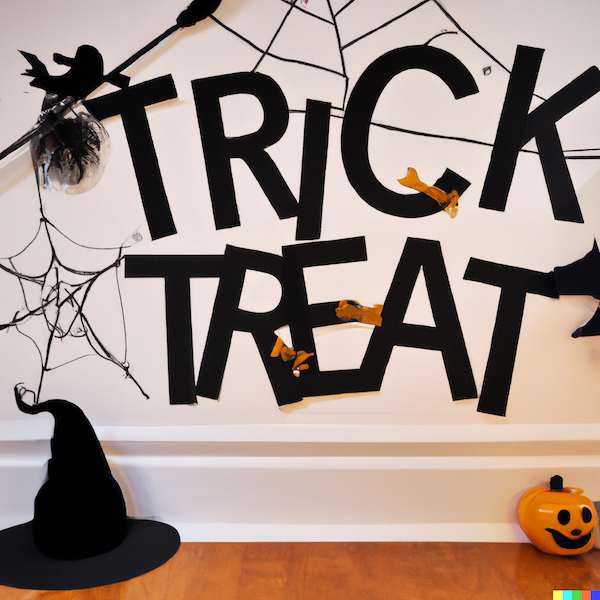Sign In
Natural, Whole, and Prime Numbers
| | 14 Theory slides |
| | 12 Exercises - Grade E - A |
| | Each lesson is meant to take 1-2 classroom sessions |
Catch-Up and Review
Here are a few recommended readings before getting started with this lesson.
Rectangular Arrangements

- Consider when there are five squares. How many of the arrangements are rectangles?
- Think about each arrangement as a division. What do the orange squares mean?
- Consider the two previous questions for when there are six squares.
Counting Is Everywhere
Numbers are used to counting things in everyday life. The most basic numbers for counting are natural and whole numbers.
Natural Numbers
Natural numbers, also known as counting numbers, are the base numbers for counting things and objects. A natural number contains no fraction, decimal part, or negative sign. A set of natural numbers is represented by the letter N and contains the numbers from 1 to infinity.
N={1,2,3,4,5,…}
Whole Numbers
Whole numbers represented by the symbol W are a set consisting of all natural numbers and 0.
W={0,1,2,3…}
The dots indicate that the set continues to increase indefinitely one step at a time. These are some things to consider about whole numbers and natural numbers.
| Natural Numbers | Whole Numbers |
|---|---|
| N={1,2,3,4,5,…} | W={0,1,2,3…} |
| The smallest natural number is 1. | The smallest whole number is 0. |
| All natural numbers are whole numbers | Not all whole numbers are natural numbers. |
| Example: Marky's favorite toys are three car figurines, two puzzles, and a guitar. | Example: The school principal has one notebook and ten pencils, yet he has zero erasers. |
Number Line
A number line is a horizontal straight line used to represent numbers visually. Numbers are placed along the line at equal intervals jointly with a vertical segment at each interval.

The arrows in the line indicate that the line extends infinitely on the left- and right-hand sides. A number on the left-hand side of the line is always less than a number on the right-hand side.
Natural Numbers on a Number Line
Natural numbers can be represented in a number line that starts from 1. Then 2, 3, 4, and so on, are marked at equal distances along the line to the right of 1.

Whole Numbers on a Number Line
A number line can also be used to represent whole numbers. The line begins at 0 and the rest of the whole numbers are drawn along the line to the right.

Whole Numbers in a Number Line
Find the whole number represented by the point on the number line.

Relationship Between Division and Multiplication
The product of two or more numbers can be divided evenly by each number in the multiplication expression. This is true every time multiplication is performed. The concepts of factors and multiples are important characteristics to understand when performing such multiplication and division. Consider their definitions.
Factor
A number a is a factor of another number b if a divides b evenly and there is no remainder. This also means that the resulting number c is such that the product of a and c equals b.
The numbers a and c are factors of b because of the Commutative Property of Multiplication. For this reason, each multiplicand in a multiplication expression is called a factor. A number can have many factors.
| Number | Factors |
|---|---|
| 48 | 1, 2, 3, 4, 6, 8, 12, 16, 24, 48 |
| 21 | 1, 3, 7, 21 |
| 9 | 1, 3, 9 |
Multiple

Giving Equal Amounts of Candy
Dominika loves Halloween. She plans to give candy to her friends at a Halloween party. Her parents give her a bag containing 20 pieces of candy. She wants to divide the candy into equal amounts.
Find the following information to help Dominika have a great Halloween party.
Hint
Solution
| Factors of 20 | |
|---|---|
| 20=1⋅20 | |
| 20=2⋅10 | |
| 20=4⋅5 | |
| 20=5⋅4 | |
| Multiples of 20 |
|---|
| 20⋅1=20 |
| 20⋅2=40 |
| 20⋅3=60 |
| 20⋅4=80 |
| 20⋅5=100 |
| 20⋅6=120 |
The sixth multiple of 20 is 120. This means that Dominika's parents should buy 6 bags of candy. That is because 20⋅6=120. Great! The candy is ready and Dominika can now have fun at the Halloween party.
Creating Halloween Decorations
Oh no! Dominika forgot to arrange balloons around her house for the party. She has 100 balloons. She wants to create arrangements of 6 balloons without having any balloons leftover. She also has 12 boxes of 5 spider decorations to decorate the walls.
Help Dominika complete her Halloween decorations!
Solution

| Multiples of 5 | 5, 10, 15, 20, 25, 30, 35, 40, 45, 50, 55, 60 |
|---|
Using Factors to Classify Whole Numbers
There are infinitely many whole numbers. Yet, they can be classified into two groups depending on the number of factors they have. Consider, for example, the factors of 11 and 9.
| Number | Factors | Number of Factors |
|---|---|---|
| 11 | 1 and 11 | 2 |
| 9 | 1, 3, and 9 | 3 |
The number 11 belongs to a set called prime numbers, while 9 belongs to a group called composite numbers.
Prime Numbers
A prime number is a whole number greater than 1 that is only divisible by 1 and the number itself. In other words, the only factors of a prime number are 1 and itself.
| Number | Factors | Prime? |
|---|---|---|
| 5 | 1 and 5 | ✓ |
| 6 | 1, 2, 3, and 6 | × |
| 7 | 1 and 7 | ✓ |
Composite Numbers
A composite number is a whole number with more than two factors. This means that there is at least another number different than 1 and the number itself that divides this number evenly.
| Number | Factors | Composite? |
|---|---|---|
| 4 | 1, 2, and 4 | ✓ |
| 6 | 1, 2, 3, and 6 | ✓ |
| 7 | 1 and 7 | × |
The set of composite numbers contains infinitely many numbers. These are some facts about prime and composite numbers.
| Prime | Composite |
|---|---|
| A prime number has only two factors. | A composite number has more than two factors. |
| The only even prime number is 2. | Every even number greater than 2 is composite. |
| Any whole number greater than 1 is either prime or composite. | |
| The number 1 is neither prime nor composite. | |
Prime or Composite?
What About the Number 1?
The number 1 is a unique number because it is neither prime nor composite. Why is this?
1 Is Not Prime
The definition of a prime number states that a prime number is a whole number greater than 1 whose factors are 1 and the number itself. Suppose that the restriction about being greater than 1 is removed. List the factors of 1.| Number | Prime Factorization |
|---|---|
| 2 | 2=2 |
| 3 | 3=3 |
| 4 | 4=2⋅2 |
| 5 | 5=5 |
| 6 | 6=2⋅3 |
| 12 | 6=2⋅2⋅3 |
1 Is Not Composite
A composite number is defined as having more than two factors. This means that 1 cannot be composite because its only factor is itself.
Conclusions
Now that it is known that 1 is neither prime nor composite let's summarize these facts.
1 is not a prime number.
1 is not a composite number.
The only factor of 1 is itself.
We want to find the largest two-digit number that is prime. This means the number of factors of that number should be 2. We can first check if the largest two-digit number is prime. The largest two-digit number is 99. Let's list its factors. Factors of99: 1, 3, 9, 11, 33, 99 The number 99 is not prime because it has six factors. We can now try the previous number to 99, which is 98. Factors of98: 1, 2, 7, 14, 49, 98 We can see that 98 is not a prime number because the number of its factors is not 2. We will continue this process until finding a prime number. The number that precedes 98 is 97. Let's check if it is a prime. Factors of97: 1, 97 The prime number we are looking for is 97 because its factors are only 1 and 97.
To find the smallest prime number greater than 500, we can begin by finding the factors of 501. If it has more than two factors, it is not a prime number. Then, we continue with the number that comes after 501 until we find a prime number. Let's list the factors of 501. Factors of501: 1, 3, 167, 501 We can note that 501 has four factors. This makes it a composite number and not a prime number. We now try with the following number, 502. Factors of502: 1, 2, 251, 502 This number also has four factors. It is not a prime number either. The next number is 503. Let's find its factors. Factors of503: 1,503 This is the number we want because it has only two factors, 1 and 503. Therefore, the smallest number greater than 500 that is prime is 503.
Consider the following statement.
|
Every even number has 2 as a factor. |
Consider the given statement.
Every even number has 2 as a factor.
We are asked if this statement is always, sometimes, or never true. We can begin by analyzing some even numbers and see their factors. Let's make a list of even numbers and their factors.
| Even Numbers | Factors |
|---|---|
| 10 | 1, 2, 5, 10 |
| 22 | 1, 2, 11, 22 |
| 56 | 1, 2, 4, 7, 8, 14, 28, 56 |
| 90 | 1, 2, 3, 5, 6, 9, 10, 15, 18, 30, 45, 90 |
| 200 | 1, 2, 4, 5, 8, 10, 20, 25, 40, 50, 100, 200 |
We can see that 2 is a factor of each of the numbers in the list. Is this always true? To determine if this statement is always true, let's consider the definition of an even number.
An even number is a whole number that is divisible exactly by 2.
This means that 2 is always a factor of any even number. Additionally, 2 is the only even prime number and therefore has two factors. Any even number greater than 2 has at least three factors, which are 1, 2, and the number itself.


